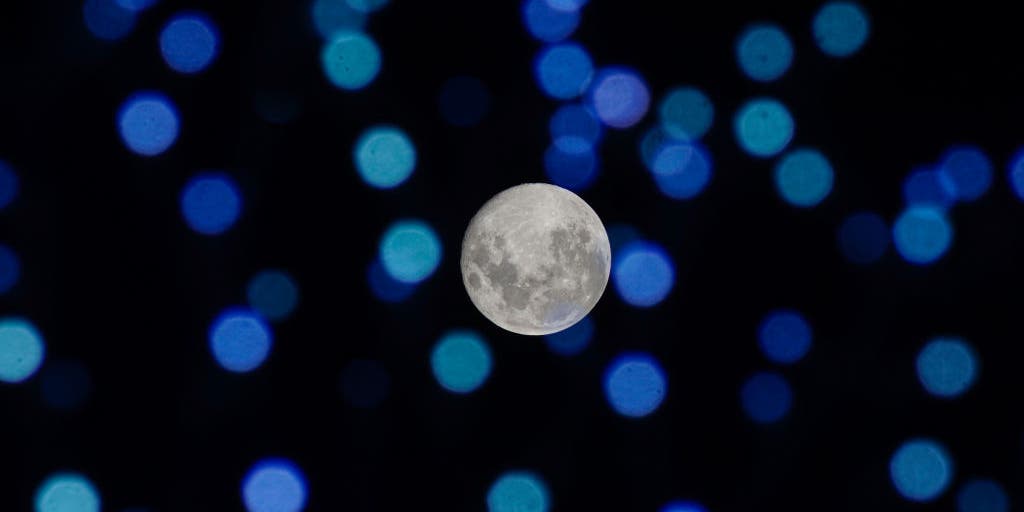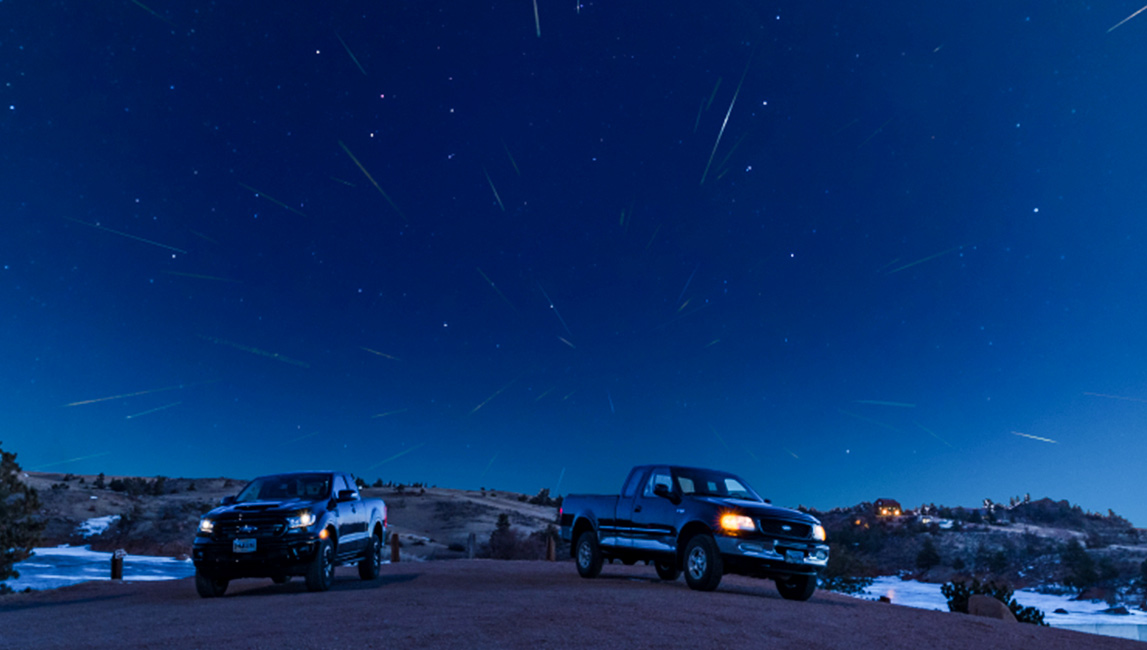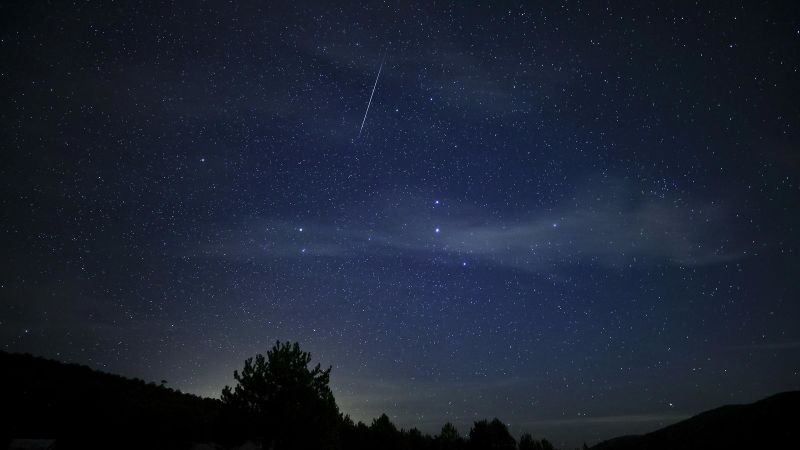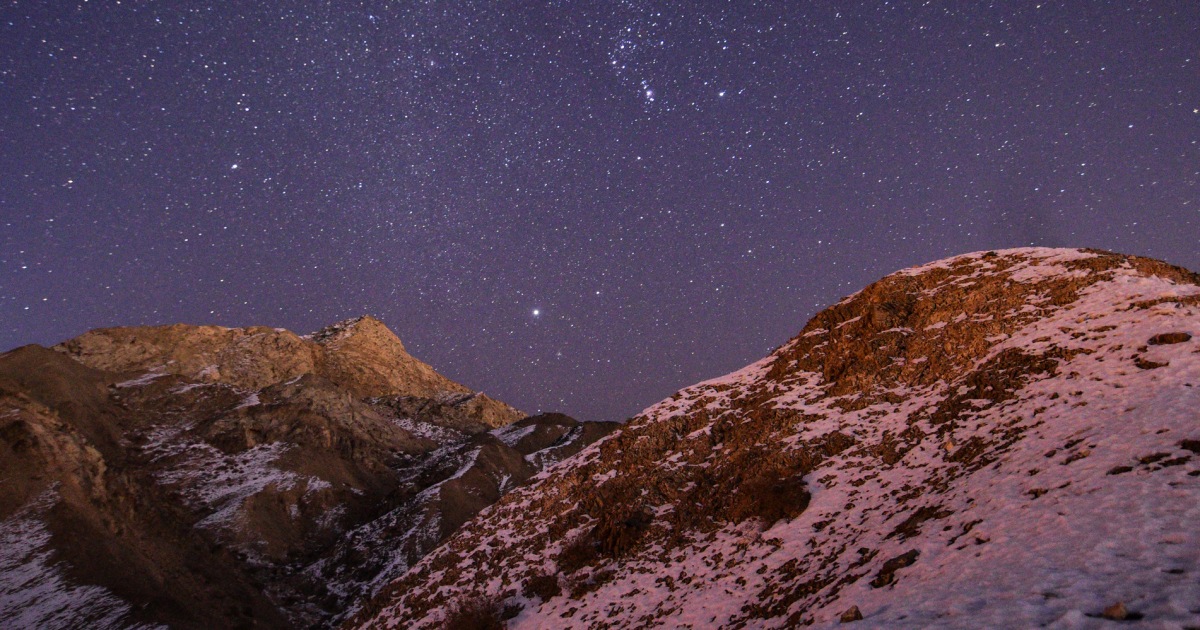The first month of the new year will offer a series of spectacular celestial events for stargazers.
The month kicks off with the Quadrantid meteor shower, peaking on Jan. 2 and 3, offering a dazzling display of meteors if skies are clear.
Mid-month, the first full Moon of the year will rise, and the Red Planet of our solar system will make its closest approach to Earth.
Finally, a planetary parade featuring Venus, Mars, Jupiter and Saturn will grace the skies towards the end of the calendar month.
DON’T MISS THESE CELESTIAL EVENTS IN 2025
January 2nd-3rd: Quadrantid meteor shower peak
The annual meteor shower, which began in December, peaks in early January every year.
Some skygazers consider the meteor shower the best of the year because of the lack of moonlight, but the event’s peak only lasts a few hours each night.
NASA said that during the height of activity, dozens of meteors can be seen every hour if the skies are clear and there is minimal light pollution.
The event is usually one of the five major meteor showers of the year.

A Quadrantid meteor streaks across the sky over Beypazari district of Ankara, Turkey on January 05, 2022. (Photo by Fatih Kurt/Anadolu Agency via Getty Images)
(Getty Images)
January 13th: Full Wolf Moon
The first full Moon of the year will rise in the east on Jan. 13 and peak at 5:27 p.m. EST, meaning the best viewing in North America will be on that Monday evening after the Sun sets.
According to the Old Farmer’s Almanac, the nickname originates from the time period when Native Americans noticed wolves howling in hunger at the Moon.
Other notable names for the lunar body include the Center Moon and the Cold Moon – all serve as reminders that the Northern Hemisphere is in the heart of winter.
January 16th: Mars closest approach to Earth
The Red Planet will make its closest approach to Earth in mid-January, when the planet will be around some 58 million miles away.
Mars’ opposition occurs roughly every two years and will be visible nearly the entire night.
NASA says the planet appears reddish due to the oxidization of iron in its many rocks.

The Sharpest View Of Mars Ever Taken From Earth Was Obtained By The Recently Refurbished Nasa Hubble Space Telescope (Hst). This Stunning Portrait Was Taken With The Hst Wide Field Planetary Camera-2 (Wfpc2) On March 10, 1997, Just Before Mars Opposition, When The Red Planet Made One Of Its Closest Passes To The Earth (About 60 Million Miles Or 100 Million Km)
(Photo By Nasa/Getty Images / Getty Images)
January 22nd: Planetary parade peak
The planets of Venus, Mars, Jupiter and Saturn will be visible without the use of sophisticated equipment.
The four planets will be visible for most from after sunset to just before midnight.
Several of the heavenly bodies will continue to be visible well into February.
Additionally, Neptune and Uranus will be visible from Earth but only with the use of an advanced telescope or similar device.
STUNNING VIDEO SHOWS MERCURY PASSING BY THE SUN
Astronomers say the newly discovered object 2024 PT will loop around Earth beginning in late September through most of November.
As we kick off the new year, January brings us some exciting celestial events to look forward to in the night sky. Here is your guide to stargazing in January:
1. Peak of Quadrantid meteor shower (January 3-4): The Quadrantid meteor shower is known for its bright fireballs and can produce up to 100 meteors per hour at its peak. This year, the peak is expected to occur on the night of January 3rd into the early morning hours of January 4th. Be sure to find a dark location away from city lights for the best viewing experience.
2. First full Moon of the year (January 17): The first full Moon of 2022, also known as the Wolf Moon, will be visible on January 17th. This is a great opportunity to observe the Moon in all its glory and perhaps even try your hand at some lunar photography.
Remember to dress warmly, bring a blanket or chair to sit on, and allow your eyes to adjust to the darkness for optimal stargazing. Happy stargazing, and may your January nights be filled with wonder and awe! #stargazing #January #meteorshower #fullmoon
Tags:
- January stargazing
- Quadrantid meteor shower
- Peak of Quadrantid meteor shower
- First full Moon of year
- Stargazing guide
- Astronomy events January
- Quadrantid meteor shower peak
- Full Moon January
- Celestial events January
- Best time to view Quadrantid meteor shower
#January #stargazing #guide #Peak #Quadrantid #meteor #shower #full #Moon #year









